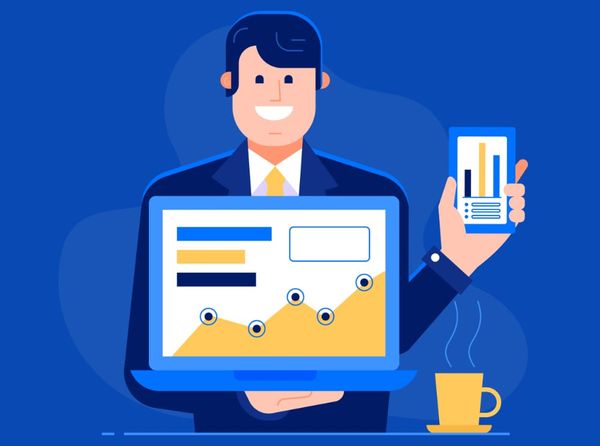
Introducing new pricing for Helpmonks
Discover Helpmonks' new pricing structure, featuring a flexible PRO plan, a FREE plan for smaller teams, and an exciting affiliate program. Experience unparalleled email management solutions today!
Read nowIn marketing and email automation, the key to success is targeting your audience. If you're sending out the same email to everyone on your list, you're probably not reaching as many people as you could be.
It may feel like pandering at first, but it's essential to know who your subscribers are if you want to reach them. That's where segmenting your emails comes in.
With segmentation, you can target individual groups of subscribers with specific messages they'll be more likely to read and respond to.
Email segmentation is the process of sorting your email subscribers into specific groups based on similar traits or interests. You can then send out specific marketing campaigns to each segment to increase the relevancy of your messaging and boost open rates and engagement.
Segmenting your email list will help you better understand your subscribers. It also helps you send highly personalized content. You'll be able to send campaigns that:
Email segmentation is more than just the people you're sending the emails to. It's also about the type of emails you send out.
Each type of email has its purpose, and it's crucial to understand what they are to decide how to use them to your advantage.
These are some of the first emails you'll receive at any company. You will likely receive one right when you start and a few more throughout your first few weeks.
These emails aim to welcome you to the company and introduce you to the people you'll be working with.
There may also be some information about:
These emails are nice and short and are an excellent way to ease you into your new job. They will help you feel more comfortable and make you more eager to start.
Some of the information in these emails may be a little daunting but don't worry about that just yet.
If your website posts regular content, you can use your weekly mailing list to highlight the best content. You can either do this as a roundup of your content or feature the most popular pieces.
Doing the latter will make your subscribers feel special because you'll be highlighting the posts that received the most clicks or shares. This is a great way to encourage people to visit your site. Couple it with polls or questions, and you will almost certainly get more responses from your readers.
Weekly email roundups are especially good for keeping your content fresh. If you put a new article up every week, your subscribers may not revisit your website as often, but they'll get a weekly reminder about your website through email.
If you have a special event coming up, use your email list to tell your subscribers about it. Tell them when and where the event is happening, when tickets will go on sale, and what they can expect at the event.
You can also use these emails to ask your readers for help. If you're planning a meet-and-greet at the event and want to make it even better, ask your readers for their suggestions or feedback.
This can go a long way in building a community around your brand. Not only will your readers feel special, but their input will make the event even better. Event-based emails can also be helpful after the event has happened.
If you have photos or videos from the event, send them to your subscribers so they can see what happened.
People love surprises, so use your email list to give your subscribers a pleasant one. If you're hosting a giveaway, send them the details in advance, so they have time to enter.
You can also use your email list to help out with a charity. Tell your subscribers about the cause and ask them to donate what they can. You can also send gifts to your subscribers on special occasions, such as their birthday or the anniversary of when they signed up for your list.
It is a good idea if you don't want to send gifts daily, once a month or on special occasions. Giving your subscribers a gift once in a while is a great way to show them you appreciate their support and are grateful for their loyalty.
If you're going to send a video newsletter, try to make it new and exciting. Video emails don't have to be about your latest content; you can use your video email as an opportunity to teach your subscribers something new. You can also use video emails to respond to questions.
If you've received many emails lately that you haven't responded to, video emails are an excellent way to let your subscribers know you haven't forgotten about them.
If you're worried about creating good video content, don't be. You can use YouTube to host your video and include a link to it in your email.
If you're running a business, you should regularly send emails to your subscribers. These emails can include links to your latest blog posts, product announcements, and anything else that might be relevant to your subscribers.
You should also send emails letting your subscribers know when new products are available. You can also send emails to announce special sales or discounts. If you are running a subscription website, you can use your emails to let subscribers know when their next package is due.
Alternatively, you can send emails to let subscribers know they can cancel anytime.

Segmenting your email list is how you make sure each campaign you send out is as relevant as possible. You can send out a single email to all your subscribers that might get lost in the shuffle.
But if you send multiple emails to specific segments, you're more likely to catch their attention and get a response. If you know that people who subscribe to your email list are there because they want to hear what you have to say, then you need to ensure you're sending out relevant emails to them.
Email segmentation is the best way to do that. There are many ways to segment your email list, from basic demographic information to more complicated behavior-based criteria.
No matter what type of segmentation you choose, the more specific you are with your targeting, the more effective your campaigns will be.
To get the most out of your email segmentation, you'll want to first take the time to learn about the people who are on your list. There are many ways to segment your email list, but ensure you're targeting the right people for the right message.
If you have an email list, you're likely using a marketing tool like HubSpot or Mailchimp. These tools have built-in segmentation capabilities that make it easy to create targeted lists.
You can add additional rules to any existing segments you've created to make them even more specific. For example, let's say you work in the education industry and have a list of teachers.
You can create one segment that includes everyone subscribing to your email list, which works in the education industry. You can then create another segment that includes only people who work in schools.
Email segmentation is sending different versions of your email campaign to different groups of people. Rather than blasting the same message to everyone who has subscribed to your list, you tailor certain emails based on things like their interests or the content they've responded to previously.
The result is that each individual receives an email that's more relevant to them personally. This hugely effective way of increasing engagement with your email program and driving conversions from your list.
But with so many marketers jumping on this trend to boost their performance, it can be challenging to know how best to implement segmentation to achieve these benefits for your business.
Before you begin implementing email segmentation, you need to know the benefits. Much like other businesses, if you invest in something, the ROI has to be worth it.
Trust us, email segmentation is not only worth it, but we've explained its exact benefits below. Understanding these benefits will aid in your final decision about when and how to implement them to increase company success.
Marketing with emails just became much easier.
By segmenting your email list, you'll be able to tailor certain emails to people based on the content they've shown an interest in. This will make connecting with your target audience significantly easier.
This is by allowing you to address their needs in a more personalized way. As opposed to blasting the same message to everyone on your list in the hopes of reaching the maximum number of people, you'll be able to send a more relevant message.
A message that's more likely to resonate with a broader audience. This will help you connect with your customers on a more personal level. As a result, they'll be more likely to engage with your content and be more receptive to your offers as they will feel they're being addressed personally.
This is a big win for your email marketing campaign and can be an excellent way of growing your customer base.
Another benefit of segmentation is that you'll be able to monitor the level of engagement in each of your emails. This will allow you to see which campaigns are proving to be most effective, which means you'll be able to replicate these in the future.
You'll also be able to see how many people are opening your emails, how many are clicking on links, and where they're clicking. This means you'll be able to track how many of your subscribers are engaging with your content and be able to modify your future campaigns based on this information and the interests of your audience.
This is especially helpful for marketers new to the email marketing campaign who want to learn more about their subscribers' behavior to optimize their approach.
Tracking engagement levels will also help you to identify any subscribers who are disengaged with your content and may need to be removed from your email list.
By segmenting your email list, you'll be able to create more tailored and specific campaigns for different segments. This means certain groups will only receive emails relevant to their interests, so you won't have to worry about annoying a wider audience with irrelevant content.
By doing this, you'll be able to create more effective campaigns as you'll be able to focus your energy on specific groups of individuals. This will allow you to tailor the message to these people and will likely be more relevant than a one-size-fits-all message.
This can be beneficial in several ways. For example, you'll be able to target your product or service better and make it relevant to the needs of various segments of your audience.
Additionally, you'll likely be able to convert more customers as your campaigns will be more appealing to their needs.
Blasting the same email to everyone on your list can result in a high bounce rate for specific segments. This means certain people will click the "unsubscribe" button and not engage with your email program.
This can negatively impact your bounce rate and can lead to specific segments of your email list being removed from your list. By segmenting your email list, you'll be able to avoid this issue better and prevent specific segments from clicking the "unsubscribe" button.
This means that you'll be able to reduce your company's bounce rate and avoid losing subscribers who are not engaged with your content. By segmenting your list, you'll be able to tailor your content to the interests of specific groups.
This means that people who are uninterested in your content will likely not receive it in their inbox and thus will be less likely to click the "unsubscribe" button.
As discussed above, segmentation can also help reduce the number of unsubscribes your company receives. As you send more relevant messages, you'll be less likely to annoy your subscribers and will likely avoid the "unsubscribe" button.
This means that you'll be able to reduce the number of unsubscribes and retain more people on your email list. This is beneficial as it means you'll be able to reach a wider target audience, and they'll be more receptive to your content.
By segmenting your list, you'll be able to make your content more relevant to various groups, likely reducing the number of unsubscribes your company receives.
This will be particularly helpful for businesses that send many emails and want to reduce the number of people turning away from their content.
Another advantage of segmenting your email list is that it will allow you to improve your click-through rate. This means that people from specific segments will be more likely to click on the links in your emails and engage with your content.
By segmenting your list and tailoring your content to the needs of specific groups, you'll be able to make it more appealing to a broader audience. This will likely lead to a higher click-through rate as people will be more interested in the content they receive.
For example, you'll be able to make your content more attractive to various segments, which will likely increase the click-through rate. Additionally, you'll be able to direct the content to the needs of specific groups, which can lead to better conversions.

Now that you've got a deeper understanding of the benefits of email segmentation, it's time to uncover how to create an email marketing campaign. Several strategies can ensure you get the most out of the campaign.
Carefully choose the strategies you will use to increase your chances of achieving the desired results.
The first step in segmenting your customers is to commit to a cadence. This is the frequency with which you send emails to your customers. In B2B, it's best to send emails two to three times a month.
In B2C, it's best to send emails once a week. Once you've committed to a cadence, you have to time your emails. Timing your emails is crucial because it ensures that your emails aren't sent at too high of a volume and that they don't arrive while your customers are still making purchasing decisions.
If your customers are in buying mode, they don't want to be sent sales messages. Instead, they want content that educates them on their problems so they can solve those problems with your product.
And if your customers aren't in buying mode, they don't want to receive sales messages either. Instead, they want content that educates them on your product's value so they can make informed buying decisions in the future.
Engagement is the volume of interactions your audience members have with your content. Examples of engagement metrics could be how often your readers click on links in your emails or how often they visit your website.
Whenever you send an email, Google Analytics has a feature showing how many readers are engaged with your content. You can see how many people clicked on each link, how long they stayed on each page, and where they went next.
In addition to measuring click-through rates and page views, you can also measure retention. Retention is the amount of time your readers spend reading your content.
To measure engagement and retention by user behavior, you need to track engagement metrics in Google Analytics. Google Analytics has a "Behavior" feature, which lets you track various metrics.
You can then compare your metrics with your engagement benchmarks to determine if your metrics are above or below average.
Although engagement metrics are important, they aren't the only metrics you should be tracking.
You should track your:
You also want to track revenue metrics and your conversion rate.
For example, you could track the:
When you're dealing with customer service inquiries, you're already in the business of collecting qualitative data. Analyzing the data, you collect from customer service inquiries can uncover insights that inform your marketing strategy.
For example, you could discover that many of your readers are interested in a product feature that is not yet available. Or you could discover that many customers are looking for a product feature currently unavailable.
These customer service insights can help you improve your product and marketing strategy.
The best insights come from customers willing to provide you with qualitative feedback. This can include surveys, focus groups, one-on-one customer interviews, and customer service feedback.
By asking your customers for feedback, you can discover their needs, wants, preferences, and perceptions of your product.
You can conduct qualitative research in two ways: by sending an email survey and asking for customer feedback in your customer service channels.
By sending an email survey, you can reach more customers than you can with customer service inquiries. However, customer service inquiries allow you to get feedback from a larger audience.
Marketers are often guilty of treating all customers the same. However, the buying journey is different for each customer. Each customer has their motivations, pain points, buying timeline, and purchasing process.
This means that each customer needs a different type of content at different times. As a marketer, it's essential to understand the buying journey. This is so you can send your readers content that meets their needs at each stage of the journey.
You can do this by identifying your:
By mapping the buying journey, you can see how the buying process differs between your customer personas.
Identifying your customer personas and creating buyer personas based on your customer personas will help you understand the buying journey and the different types of content customers need at different times.
When it comes to email automation, there's a lot of information out there to digest. But, we've done the work and created a marketing automation guide you can reference as you take on this user segmentation journey.
Helpmonks - an all-in-one customer engagement software - comes with an integrated email marketing platform. With it's smart lists, it's easy to create segementation for your email list subscribers. Start your free trial today.

Discover Helpmonks' new pricing structure, featuring a flexible PRO plan, a FREE plan for smaller teams, and an exciting affiliate program. Experience unparalleled email management solutions today!
Read now
Dynamic email signatures increase brand visibility, build brand identity, and boost conversions. Learn how to create and update dynamic email signatures.
Read now
Looking for an email marketing automation software? This guide shows what to look for. We'll also review the best tools for your online marketing needs.
Read now
Using customer engagement solutions helps you keep your existing customer base and grow. Here are the top 10 customer engagement solutions for your business.
Read now
Empower your team and delight your customers.
